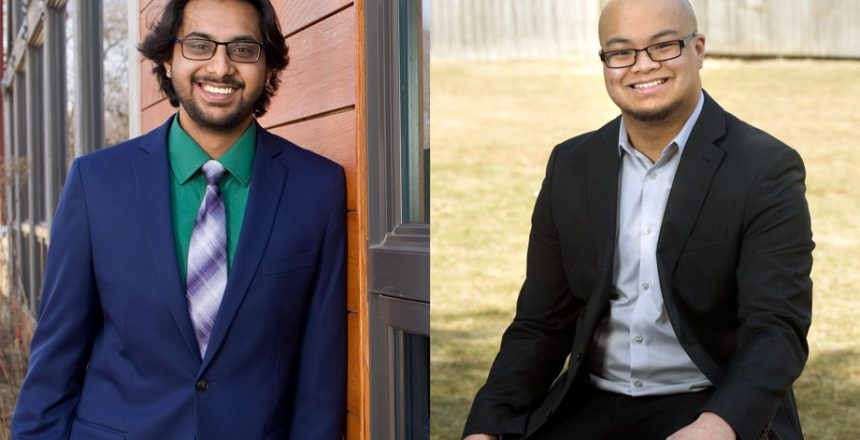Two College of DuPage Architecture program alumni are gaining invaluable experience in urban design as part of the Illinois School of Architecture’s Chicago Studio, a semester-long residential immersion in the Chicago architectural scene typically exclusive to graduate students.
Akash Mattu of Naperville and Michael Rivera of Wheaton, who are currently undergraduate students at the University of Illinois at Urbana-Champaign, are part of a spring project that focuses on the Woodlawn neighborhood on the South Side of Chicago.
“Our job is to work with firms, developers and the community to create a cohesive plan to revitalize Woodlawn, which used to have a population of 120,000 but is now at 30,000,” Rivera said. “With the Obama Presidential Center (OPC) slated for construction just a couple of blocks away, the concern is that the OPC will not have the beneficial effect that people were hoping for and will instead service only those closest to Hyde Park. Even worse, the OPC could bring about gentrification, pushing out an already hurting community.”
One reason that attracted Mattu to the Chicago Studio was its format. In a traditional studio setting, he said a student only interacts with the professor in a majority of cases.
“This is the disconnect between architectural schooling and professional practice. In an undergraduate studio, almost all of the projects are individual whereas in the profession, you work in a team setting,” he said. “The Chicago Studio is giving me more experience in putting a building together with the help of professionals.”
As a result, Mattu is enjoying the dynamics of a group approach. For this particular assignment, he is learning how to respect the context of a project.
“It was honestly surprising to see how tight-knit the community was, even after facing such hardships,” he said. “A lot of what I learned about the community from talking to local leaders and residents hugely impacted how I went about designing my buildings.”
Rivera enjoyed learning about urban design, streetscape and addressing the pedestrian experience due to the unique aspects of the project.
“We tackled new problems that had previously been unaddressed in my past studio courses, where we were usually given a set of required programs and their respective sizes to fit into our building,” he said. “Here we were given the freedom to choose what we wanted to design based on what we as individuals thought would best serve Woodlawn and increase density.
“The students were also pushed to reach out to local developers and city officials to try and coordinate design and make sure the project was grounded in reality. There wasn’t a whole lot of handholding. Our professor would make introductions and from there, the students would take charge. The Illinois School of Architecture’s outreach allowed us to work with the mayor’s office, the Chicago Department of Planning and Development, and local developers. We also met with various product manufacturers who walked us through potential integrations with our designs.”
In addition to the Chicago Studio experience, Rivera is also excited about the Urban Morphology Seminar, another graduate-level course at the Illinois School of Architecture that is providing him with a holistic understanding of urban design in the context of urban areas around the world. He plans to use his newly gained knowledge in a career that supports local or disadvantaged communities.
“I don’t believe a lot of undergraduates get exposure to this sort of education and, more importantly, these connections, so I definitely believe it will help me post-undergrad as I apply it to my future career,” he said.
Mattu’s career goals include becoming a licensed practicing architect and entering the real estate development sector. He hopes to apply his experience in the Chicago Studio to his professional career through buildings that help communities grow by responding to their needs.
“There’s a huge variety of problems that architects can address, but the people who have the real power to change the construction industry are the developers,” he said. “I hope to provide real estate professionals an insight into why social equity as well as sustainability should be incorporated into their projects and how to create buildings with positive impacts on the surrounding communities.”
Mattu cannot stress enough how well the Architecture program at COD prepared him for transfer and his future career.
“Going to COD was a great decision and I have not looked back once. I really appreciate the job they did preparing me for the next steps in my educational journey and I would urge anyone contemplating the architecture path to seriously consider College of DuPage.”
Learn more about the Architecture program at College of DuPage.


